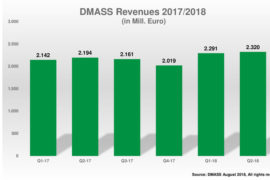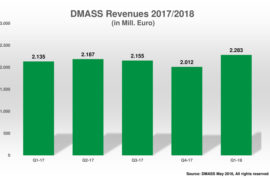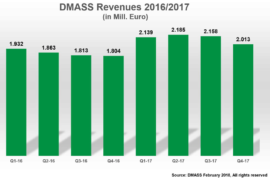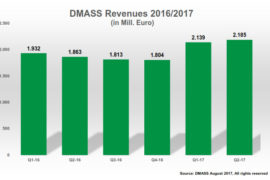The European semiconductor distribution industry exceeded expectations in the fourth quarter of 2014. According to DMASS (Distributors’ and Manufacturers’ Association of Semiconductor Specialists) semiconductor distribution sales in Q4/CY14 grew by 10.3% to 1.57bn Euro. The full year closed with sales of 6.34bn Euro, 7.7% up on 2013 and close to record 2011.
Georg Steinberger, chairman of DMASS, commented: “It is always good to see predictions being beaten by the reality. DMASS members did well in an increasingly steady business year and leveraged their regional strength. The 2014 results show healthy growth across the board, with very few problem zones.”
Strong performances came from Eastern Europe, Austria, Iberia, the UK and Israel, all of which grew more than the DMASS average. Belgium, Norway, Sweden and Russia all declined the latter hobbled by EU sanctions.
The German distribution market grew 8.5% to 474m Euro, Eastern Europe by 23.7% to 192m Euro, Nordic by 6.8% to 161m Euro, Italy by 6.7% to 139m Euro, UK & Ireland by 12.3% to 135m Euro and France by 6.5% to 122m Euro. On an annualised basis, Germany remains the biggest market with over 2bn Euro of sales, representing 32% of DMASS.
Adds Georg Steinberger: “What is important to notice is that the distribution industry has proven resilient to the overall economic slowdown in Western and Southern Europe. This means there is a lot of market dynamics driven by innovation rather than macro-economic effects. What is also important is the fact that currency effects are becoming more critical again. The drop of the Euro versus the Dollar within the last 12 months is staggering.”
In the product categories only memories up 0.4% to 484m Euro), Programmable Logic,down 3.1% to 484m Euro) and Other Logic down -5.9% to 303m Euro underperformed.
On the positive side, Discretes grew by 17.2% to 363m Euro, Power by 10.5% to 639m Euro, Sensors by 9.7% to 137m Euro, Optoelectronics by 13.4% to 644m Euro, Analogue by 9.9% to 1.8bn Euro and MOS Micro by 8.5% to 1.3bn Euro. Growth drivers were RF, MOSFETs, LEDs, NAND-Flash-Memories and 32-Bit Microcontrollers.
Georg Steinberger concludes: “My long-held conviction is proven time and again – distribution is not about selling commodities but about creating demand for complex technologies. Double digit growth mainly happens with more sophisticated products, where system knowledge or software expertise are required as well as engineering support.”
Author
Mick Elliott







Comments are closed.